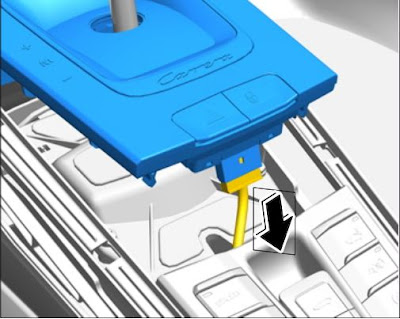NOTE:
- If you want to skip all the boring gearhead stuff and get right to the possible upgrade solutions, jump HERE (Part 3 coming soon!)
- You may also want to check-out Part 1
Part 2
First, full disclosure: I am not a Porsche technician, and I am not an Engineer. I just like to think like one! So my description of the "inner-workings" of the Porsche Doppelkupplung or PDK transmission are more of a component perspective and reflective of my own technical knowledge, taking a shot at describing how the various parts work together. Feel free to disagree, or point out what I've missed, by commenting below! I am sure there are much more technically details, accurate descriptions than what I attempt here -- but the average person out there should be able to follow-along.Brief history of the PDK: As many Porsche fans know, P-cars have offered automatic and semi-automatic transmissions over the years. Going back to the late 1960's, the first "clutchless automatic" Porsche offered is known as the "Sportomatic." This was an option on cars through about 1970... It wasn't until 1990 that Porsche offered a new generation of transmission known as the "Tiptronic." This was a more successful option, and the innovation was the electronic control the driver had over the transmission.
In 2009 Porsche released the Porsche Doppelkupplung, or PDK transmission. For a brief demonstration of how it works, enjoy the following video:
While that animation does a great job "showing" you how the dual-clutch setup auto-magically works, it DOESN'T talk at all about the component relationships - and most importantly, the how do you tell the transmission what you want from it??? It's all fine and dandy that the technology is capable of pre-selecting gears and taking inputs from the ECU and stability management systems -- but what about input from the driver? That's what we'll focus on in the rest of this post.
And, by the way, "Doppelkupplung" translates from German to English as "two-clutches!"
PDK "System" of Components:
From a humanoid perspective, there are really three, arguably five components to the transmission system:
- The driver compartment center console PDK selector lever (aka "the human");
- The Transmission Control Unit (TCU);
- The PDK transmission;
- and, the engine control unit or ECU, and ABS/PSM controller -- to optimize shift strategy and match engine revs during shifting;
Here is an illustration of the driver-compartment PDK selector from the Porsche PET catalog:
Looking at the illustration, you can see that there is a physical cable that will transmit selector position or activity to the transmission.
And an illustration of the TCU location (upper left corner, #6 shown next to the mounting bracket or cage):
And an illustration of the TCU location (upper left corner, #6 shown next to the mounting bracket or cage):
 |
| #6 in this diagram is the control unit |
For reference, since that illustration is so awful and includes a bunch of other unrelated control units, here is a photograph of an actual TCU:
 |
| Control Unit from a 991 |
 |
| 991 Control Unit showing connectors |
And finally, here is a PET diagram showing the PDK transmission and related parts:
 |
| PDK transmission parts |
Here are some photographs of a PDK transmission out of a 991 C4S (photos from LADismantlers):
 |
| PDK Side View |
 |
| PDK clutch housing |
Now that we've covered the basic components of the system, let's consider the end-to-end system of a driver controlling the transmission...
At the most basic level, the driver selects a driving mode upon starting-up the car. Settings include full-automatic in base or sport modes, and in cars equipped with Sport Chrono option an additional Sport Plus mode. Each selection changes the shifting behavior of the transmission (and in some cases other features of the car, such as the exhaust valves or engine mounts....).
How? The driver signals a choice of mode, gear, and so on by moving the PDK lever. This action transmits a signal to the transmission control unit (described above), which in turn communicates directly to the transmission. How quickly the choice is executed is determined by the selected mode, in other words what software "mapping" is selected. In some cases with Sport and Sport + modes shifts up and down the gearing range are executed more rapidly. There is also apparently a version of the PDK in the GT3 991 cars that has been called PDK+ and which comes from the factory with gear change mappings in the TCU that are faster than the GTS, S and base 991 Carrera's.
So that's it in a very simple summary. The driver signals a mode and gear selection through the PDK lever, through a cable that runs to the TCU under the rear seating area, which in turn communicates with the PDK.
In Part 3 we will go into description of what options PDK owners have to increase the performance of their 911 by making modifications or upgrades to the transmission.....
PART 3 (coming soon!)































